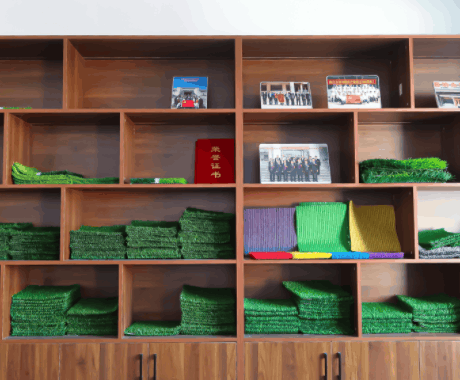
- Afrikaans
- Arabic
- Belarusian
- Bengali
- Czech
- Danish
- Dutch
- English
- Esperanto
- Estonian
- Finnish
- French
- German
- Greek
- Hindi
- Hungarian
- Icelandic
- Indonesian
- irish
- Italian
- Japanese
- kazakh
- Rwandese
- Korean
- Kyrgyz
- Lao
- Latin
- Latvian
- Malay
- Mongolian
- Myanmar
- Norwegian
- Persian
- Polish
- Portuguese
- Romanian
- Russian
- Serbian
- Spanish
- Swedish
- Tagalog
- Tajik
- Thai
- Turkish
- Turkmen
- Ukrainian
- Urdu
- Uighur
- Uzbek
- Vietnamese
Understanding the Rise of Plastic Pitch Football in Modern Sports
Dec . 10, 2024 22:57 Back to list
The Evolution and Popularity of Plastic Pitch Football
In recent years, the world of football has witnessed a remarkable transformation, largely due to the emergence and widespread adoption of plastic pitches. These synthetic surfaces, designed to emulate the performance of natural grass, have revolutionized the way the game is played and experienced by players and fans alike. This article delves into the evolution, advantages, and challenges of plastic pitch football, exploring its growing popularity across various levels of the sport.
The Evolution of Plastic Pitches
The idea of artificial playing surfaces is not new; it can be traced back to the 1960s when the first synthetic grass was installed at the Astrodome in Houston, Texas. However, it wasn't until the late 20th and early 21st centuries that plastic pitches gained significant traction in the football community. Advancements in technology have led to the development of high-quality artificial grass that closely mimics the feel and performance of natural grass, making it a viable alternative for football clubs, schools, and recreational spaces.
Originally, synthetic pitches were met with skepticism, primarily due to concerns about player safety and the quality of play. Many critics argued that plastic surfaces could lead to injuries and did not provide the aesthetic beauty and challenge of traditional grass fields. However, through rigorous testing and improvements in materials and design, plastic pitches have transformed into a safe and reliable playing surface. Modern plastic pitches are made with a variety of components, including polyethylene blades, infill systems like sand and rubber granules, and a durable backing, resulting in fields capable of enduring heavy use while maintaining excellent playing characteristics.
Advantages of Plastic Pitches
One of the most significant advantages of plastic pitches is their durability. Unlike natural grass, which can become damaged due to weather conditions, heavy usage, or maintenance lapses, synthetic surfaces can withstand extreme weather and are not as susceptible to wear and tear. This durability allows clubs and organizations to host matches and training sessions consistently, regardless of the season or environment.
Another significant benefit is maintenance. While natural grass requires regular mowing, watering, fertilizing, and pest control, plastic pitches are relatively low-maintenance. They can typically be cleaned with a simple wash and require infrequent brushing to maintain the evenness of the infill. This ease of upkeep has made plastic pitches an attractive option for schools and community fields, where resources for maintenance are often limited.
plastic pitch football

Moreover, the consistent playing surface offered by plastic pitches delivers a reliable experience for players. The uniformity of the synthetic grass ensures that ball behavior is predictable, allowing players to develop and refine their skills without the variable conditions that can accompany natural grass fields.
Challenges and Controversies
Despite the numerous advantages, plastic pitch football is not without its challenges and controversies. One of the main concerns revolves around player safety. Critics argue that synthetic surfaces can lead to a higher incidence of certain injuries, such as ankle and knee issues, due to the increased hardness of the surfaces compared to natural grass. However, many studies have shown that when properly installed and maintained, plastic pitches can provide a safe playing environment.
Environmental concerns also linger in discussions about plastic pitches. The manufacturing and disposal of synthetic materials raise questions about sustainability. While some manufacturers are developing eco-friendlier options and recycling programs, the long-term impact of plastic fields on the environment remains a topic of debate.
The Future of Plastic Pitch Football
As football continues to grow globally, the demand for high-quality playing surfaces will only increase. Plastic pitch football is likely to play a crucial role in meeting this demand by providing accessible and durable options for clubs and organizations of all sizes. With ongoing innovations in materials and technology, the future of synthetic grass looks promising, ensuring that football remains an inclusive and dynamic sport.
In conclusion, the rise of plastic pitch football signifies an important evolution in the beautiful game. Its advantages in durability, maintenance, and consistent playing conditions make it an appealing choice for many. While challenges remain, the positive impact of synthetic pitches on the growth of football is undeniable, paving the way for a future where the sport can thrive, regardless of its location or climate.
-
The Benefits of Artificial Turf for Indoors
NewsJul.15,2025
-
How Artificial Grass Suppliers Ensure Quality Products
NewsJul.15,2025
-
Artificial Grass and Pets: A Space for Relaxation
NewsJul.08,2025
-
Balcony & Outdoor Decoration with Artificial Grass
NewsJul.08,2025
-
Best Indoor Artificial Grass for Home
NewsJul.07,2025
-
Best Pet Turf for Dogs: Safe & Durable Artificial Grass Options
NewsJul.07,2025
Products categories









